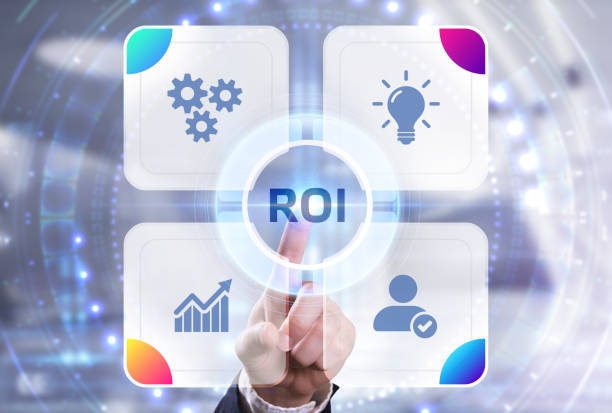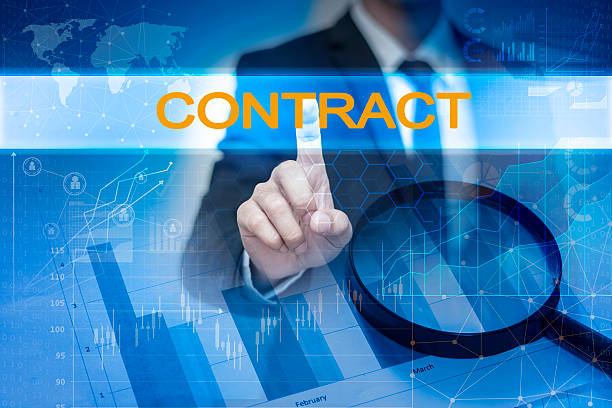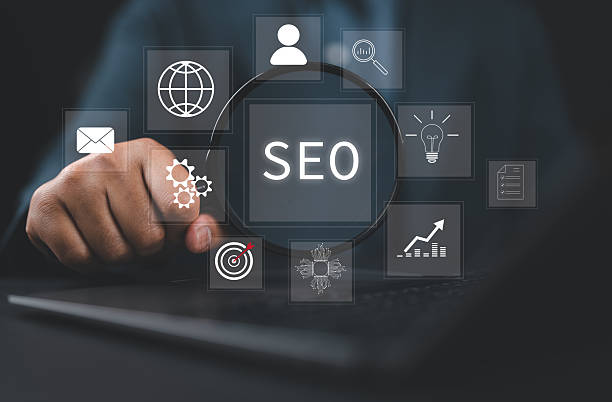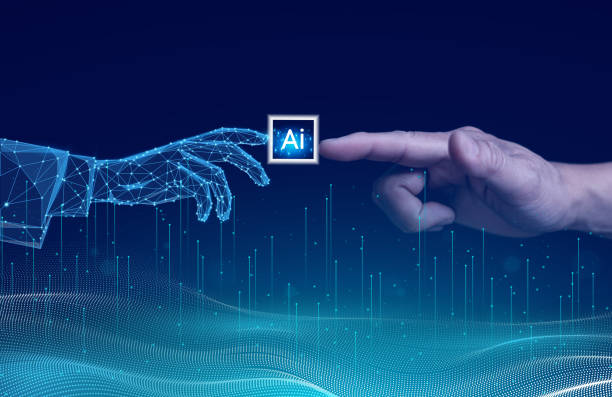What is On-Page SEO and Why is it Important?

What is On-Page SEO and Why is it Important?
On-Page SEO refers to a set of actions we take within our website to improve the site’s ranking in search engines like Google.
These actions include optimizing content, site structure, HTML tags, and other factors related to user experience.
The importance of on-page SEO lies in the fact that it helps search engines better understand your site’s content and show it to relevant audiences.
In general, on-page SEO focuses on controlling factors that you have direct control over.
These factors are in contrast to Off-Page SEO, which refers to factors such as link building and activity on social networks.
On-page SEO is the foundation of a successful SEO strategy, and without it, off-page SEO efforts will not achieve the desired results.
On-page SEO is essential for the greater success of the site SEO.
A website with strong on-page SEO not only achieves a better ranking in search results, but also provides a better user experience for visitors.
This leads to increased user dwell time on the site, reduced bounce rate, and increased conversion rate.
On-page SEO directly impacts the amount of organic website traffic and helps businesses achieve their goals.
Are you worried about losing customers because you don’t have a professional online store?
Forget these worries with online store design by Rasaweb!
✅ Significant increase in sales and visitor-to-customer conversion rate
✅ Professional and user-friendly design that earns customer trust
⚡ Get a free consultation from Rasaweb
Keyword Research – A Foundation for Successful On-Page SEO

Keyword Research – A Foundation for Successful On-Page SEO
Keyword research is one of the most important steps in on-page SEO.
Choosing the right keywords helps you optimize your content in a way that is appealing to your target audience and search engines.
To begin, you should first create a list of words and phrases that users search for to find your products or services.
You can use various tools such as Ahrefs, Moz Keyword Explorer, Ubersuggest and Google Keyword Planner to find relevant and popular keywords.
When choosing keywords, pay attention to search volume, keyword difficulty, and the relevance of the words to your business.
It is best to consider a combination of head keywords and long-tail keywords in your strategy.
Head keywords usually have high search volume but are also highly competitive, while long-tail keywords have lower search volume but are also less competitive and help you attract more targeted traffic.
On-page SEO starts with strong keyword research.
After selecting keywords, use them naturally in your content.
Avoid over-repeating keywords, as this can lead to your site being penalized by search engines.
Instead, try to create valuable and helpful content for users that answers their questions and needs.
Using synonymous and related keywords can also help improve your site’s on-page SEO.
Finally, remember that keyword research is an ongoing process and you should regularly review and update your keywords.
Optimizing Titles and Meta Tags
![]()
Optimizing Titles and Meta Tags
Title Tags and Meta Descriptions are among the most important elements that should be optimized in on-page SEO.
Titles are clickable text that appears in search results and shows users and search engines what your page is about.
Titles should be short, engaging, and relevant to the page content and include the main keyword.
Titles should be less than 60 characters long to be fully displayed in search results.
Principled on-page SEO requires compliance with these points.
Meta tags are short descriptions that appear below the title in search results and give users more information about the page content.
Meta tags should not be more than 160 characters and should be written in a way that encourages users to click on your link.
Using relevant keywords and providing an attractive summary of the page content can help improve your Click-Through Rate (CTR).
Both titles and meta descriptions play a fundamental role in improving the on-page SEO of the site.
Example:
If your page is about “Laptop Buying Guide”, your title and meta tag could be:
Title: Comprehensive Laptop Buying Guide in 2024 | Best Models and Important Tips
Meta Tag: Looking to buy a laptop? This guide helps you choose the best models to suit your needs.
Introducing the best brands and important tips before buying.
| Element | Importance in On-Page SEO | Best Practice |
|---|---|---|
| Title Tag | Very High | Using the main keyword, attractiveness, being short |
| Meta Description | High | Attractive summary of content, using related keywords, encouraging clicks |
Remember that titles and meta tags should be unique to each page and accurately describe the page content.
Using duplicate titles and meta tags can lead to a decrease in your site’s ranking in search results.
Optimizing these two key elements is an important step towards improving your site’s on-page SEO.
Optimizing URL Structure

Optimizing URL Structure
URL structure is another important factor in on-page SEO that is often overlooked.
Your site’s URLs should be short, descriptive, and contain relevant keywords.
A good URL not only helps search engines better understand the page content, but also shows users what the page is about.
On-page SEO requires attention to all the details, including the URL structure.
The best way to optimize URL structure is to use the main keywords in the URL and avoid using uppercase letters, numbers, and unnecessary symbols.
Also, it is best to keep URLs as short as possible and avoid creating complex and long URLs.
It is recommended to use a hyphen (-) instead of an underscore (_) to separate words in the URL.
By optimizing the URL structure, search engines can better crawl and index your website pages.
Example:
Inappropriate URL: example.com/page?id=123&category=456
Appropriate URL: example.com/laptop-buying-guide
In the example above, the second URL is not only more understandable for users, but also gives search engines more information about the page content.
Optimizing the URL structure is a simple but effective step towards improving your site’s on-page SEO.
On-page SEO is significantly improved with a proper URL structure.
Are you aware that a weak corporate website is costing you many opportunities every day? Solve this problem forever with professional corporate website design by Rasaweb!
✅ Create a powerful and reliable image of your brand
✅ Attract new targeted customers and increase sales
⚡ [Get Free Website Design Consultation]
Optimizing Images – Increasing Speed and Improving SEO

Optimizing Images – Increasing Speed and Improving SEO
Images play an important role in the attractiveness and better understanding of content, but if they are not properly optimized, they can have a negative impact on site loading speed and SEO.
Image optimization includes reducing file size, choosing the right format, using alternative text (Alt Text), and naming files appropriately.
By optimizing images, you can increase your site’s loading speed and improve user experience.
On-page SEO includes optimizing all elements of the site.
Reduce File Size: Before uploading images, reduce their size as much as possible.
You can use online tools such as TinyPNG or ImageOptim to reduce image size without sacrificing quality.
Choose the Right Format: JPEG, PNG, and WebP formats are the most common image formats.
JPEG is suitable for images with many colors, and PNG is suitable for images with graphics and text.
WebP is a newer format that has a smaller size and offers higher quality.
Use Alt Text: Alt Text is text that is displayed to users if the image is not displayed.
Alt Text should be descriptive and relevant to the image content and include the main keyword.
Alt Text helps search engines understand the image content.
Name Files Appropriately: Image filenames should also be descriptive and contain relevant keywords.
Instead of using default names like DSC001.jpg, use meaningful names like laptop-buying-guide.jpg.
By optimizing images, you not only increase your site’s speed, but also help improve on-page SEO.
On-page SEO helps you attract more audience.
Optimizing Content – Creating Valuable and Engaging Content
![]()
Optimizing Content – Creating Valuable and Engaging Content
Content is King! This old saying still holds true in the world of SEO.
Creating valuable and engaging content is one of the most important factors in on-page SEO.
Your content should answer users’ questions and needs, engage them, and encourage them to stay on the site and interact with it.
Quality content not only improves your site’s ranking in search results, but also earns the credibility and trust of users.
On-page SEO thrives with the production of high-quality content.
Key Points in Creating Valuable Content:
- Keyword Research: Before writing content, research what topics users are searching for and what words they are using.
- Appropriate Structure: Divide your content into smaller sections and use titles, subtitles, paragraphs, and lists to better organize it.
- Readability: Use short and simple sentences and avoid using complex terms.
- Images and Videos: Use images and videos to make content more engaging and concepts easier to understand.
- Updates: Update your content regularly to keep the information accurate and relevant.
Remember that the main goal of creating content is to provide value to users.
If your content is useful and engaging, users are more likely to share it with others and return to your site.
This helps improve on-page SEO and increase site traffic.
On-page SEO is the best way to provide valuable content to the target audience.
Internal Linking – Guiding Users and Search Engines

Internal Linking – Guiding Users and Search Engines
Internal linking refers to the process of creating links between different pages of your website.
Internal linking helps users easily navigate your site and find more information.
Also, it helps search engines better understand your site structure and identify more important pages.
Internal linking is one of the most important on-page SEO techniques that can have a significant impact on your site’s ranking.
On-page SEO is much stronger with optimized internal linking.
Key Points in Internal Linking:
- Relevance: Links should point to pages relevant to the content of the current page.
- Anchor Text: Use descriptive anchor text that contains relevant keywords.
- Number of Links: Avoid using too many links on one page.
- Important Pages: Link to the more important pages of your site to improve their ranking.
| Benefits | Description |
|---|---|
| Improved Ranking | Improve site ranking in search engines by guiding bots |
| Improved User Experience | Improve navigation and guide users to relevant pages |
| Increased Dwell Time | Increase the time users spend on the site |
Example:
If you are writing an article on “On-Page SEO”, you can link to related articles on “Keyword Research” or “Image Optimization”.
This helps users find more information on related topics and shows search engines that your pages are related to each other.
Internal linking is a powerful strategy in on-page SEO that should not be overlooked.
Optimizing the site through on-page SEO leads to business growth.
Site Speed – A Critical Factor in SEO and User Experience

Site Speed – A Critical Factor in SEO and User Experience
Site loading speed is one of the most important factors in SEO and user experience.
Users expect web pages to load quickly, and if a site is slow, they are likely to leave it and go to another site.
Search engines also pay attention to site speed, and sites that load faster get a better ranking in search results.
Optimizing site speed is an essential step in on-page SEO.
Ways to Increase Site Speed:
- Optimize Images: Upload images with small size and appropriate format.
- Use CDN: Use a Content Delivery Network (CDN) to load site files faster.
- Enable Compression: Use Gzip compression to reduce the size of HTML, CSS, and JavaScript files.
- Optimize Code: Optimize your site’s HTML, CSS, and JavaScript code and avoid extra and unnecessary code.
- Use Cache: Use a cache system to store site information and load pages faster.
You can use various tools such as Google PageSpeed Insights and GTmetrix to check your site speed and identify potential problems.
By optimizing site speed, you not only improve your site’s ranking in search results, but also improve user experience and increase conversion rates.
Strong on-page SEO requires high site speed.
Are you tired of losing business opportunities due to not having a professional corporate website?
Rasaweb helps you with professional corporate website design:
✅ Create a powerful and reliable image of your brand
✅ Convert website visitors into loyal customers
⚡ Get a free consultation now!
Responsive Design – Mobile Compatibility

Responsive Design – Mobile Compatibility
Today, more than half of internet traffic comes from mobile devices.
Therefore, having a responsive website that displays correctly on different devices is very important.
Responsive design means that your website automatically adapts to the screen size of the user’s device and provides a good user experience.
Google also values responsive sites and ranks them higher in search results.
Mobile compatibility is a key factor in on-page SEO.
Key Points in Responsive Design:
- Using CSS Frameworks: Use CSS frameworks like Bootstrap or Materialize to create a responsive layout.
- Using Responsive Images: Use responsive images that adapt to the screen size of the user’s device.
- Optimize Navigation: Optimize your site navigation for mobile devices and use dropdown menus or large buttons.
- Test on Different Devices: Test your website on different devices to make sure it displays correctly.
By having a responsive website, you can improve user experience, increase your site traffic, and get a better ranking in search results.
On-page SEO and responsive design are two complementary factors in online success. On-page SEO helps improve user experience with a responsive and mobile-friendly site.
Schema Markup – Helping Search Engines Better Understand Content

Schema Markup – Helping Search Engines Better Understand Content
Schema Markup is a code that allows you to provide more information about the content of your page to search engines.
By using Schema Markup, you can help search engines better understand your page content and show it to relevant users.
Schema Markup can be used for different types of content such as articles, products, events, recipes, etc.
Using Schema Markup is an advanced on-page SEO technique that can have a significant impact on your site’s ranking.
On-page SEO with Schema Markup reaches a new level of optimization.
Types of Schema Markup:
- Article: For news articles and blogs
- Product: For product pages of online stores
- Event: For event and conference pages
- Recipe: For cooking recipe pages
- Organization: For company and organization information pages
You can use the Google Rich Results Test tool to check your page’s Schema Markup and make sure it’s correct.
By using Schema Markup, you can help search engines better understand your page content and show it to relevant users.
This can lead to an increase in click-through rate (CTR) and improve your site’s ranking in search results.
Schema Markup is a powerful tool in on-page SEO that helps you stay ahead of your competitors.
Schema greatly helps your site’s on-page SEO.
Frequently Asked Questions
| Question | Answer |
|---|---|
| What is On-Page SEO? | It refers to a set of actions that are done within the website to improve the ranking in search engines. |
| Why is On-Page SEO important? | Because it helps search engines better understand your site’s content and structure and improves user experience. |
| What are the most important elements of On-Page SEO? | Title and meta descriptions, keywords, URL structure, quality content, image optimization, internal linking and site speed. |
| How to optimize the title tag and meta description? | The title should include the main and attractive keyword and the meta description should be a compelling summary of the content with relevant keywords. |
| What is the role of keywords in On-Page SEO? | Keywords make search engines understand what the content of the page is about and should be used naturally and intelligently in the text. |
| How is image optimization done for On-Page SEO? | By compressing the volume, using a descriptive file name and filling the Alt tag with relevant descriptions and keywords. |
| What is Internal Linking and what is its use? | It is connecting different pages of the site to each other. This helps to distribute the credibility of pages (Page Authority) and improve the crawling of search engines. |
| What is the importance of site loading speed in On-Page SEO? | High speed improves user experience and is one of the important ranking factors for search engines like Google. |
| What effect does the site being responsive (Mobile-Friendliness) have on On-Page SEO? | Considering the increase of mobile users, being responsive is essential to provide a suitable user experience in all devices and Google’s mobile-first indexing priority. |
| What are the important factors related to content in On-Page SEO? | Originality, quality, comprehensiveness, readability, appropriate use of headings (H1, H2,…) and regular content updates. |
And other services of Rasa Web Advertising Agency in the field of advertising
Intelligent Data Analysis: A professional solution for digital branding with a focus on intelligent data analysis.
Intelligent UI/UX: Professional optimization for digital branding using key page optimization.
Intelligent Sales Automation: A creative platform to improve the click-through rate by optimizing key pages.
Intelligent Advertising Campaign: Transform SEO ranking with the help of customizing user experience.
Intelligent Advertising Campaign: Professional optimization for digital branding using SEO-oriented content strategy.
And more than hundreds of other services in the field of internet advertising, advertising consulting and organizational solutions
Internet Advertising | Advertising Strategy | Advertorial Report
Resources
What is On-Page SEO? – Zoomit
,What is On-Page SEO? – Faraz Site
,What is On-Page SEO and why is it important? – Nabz-Sima
,What is On-Page SEO? | SEO Rooz
? With Rasaweb Afarin, take your business to the digital peak and have a powerful presence in the online world, tailored to today’s needs, with our specialized services including corporate website design. Visit the Rasaweb Afarin website for more information on our comprehensive digital marketing solutions.
📍 Tehran, Mirdamad Street, next to the Central Bank, South Kazerun Alley, Ramin Alley, No. 6



